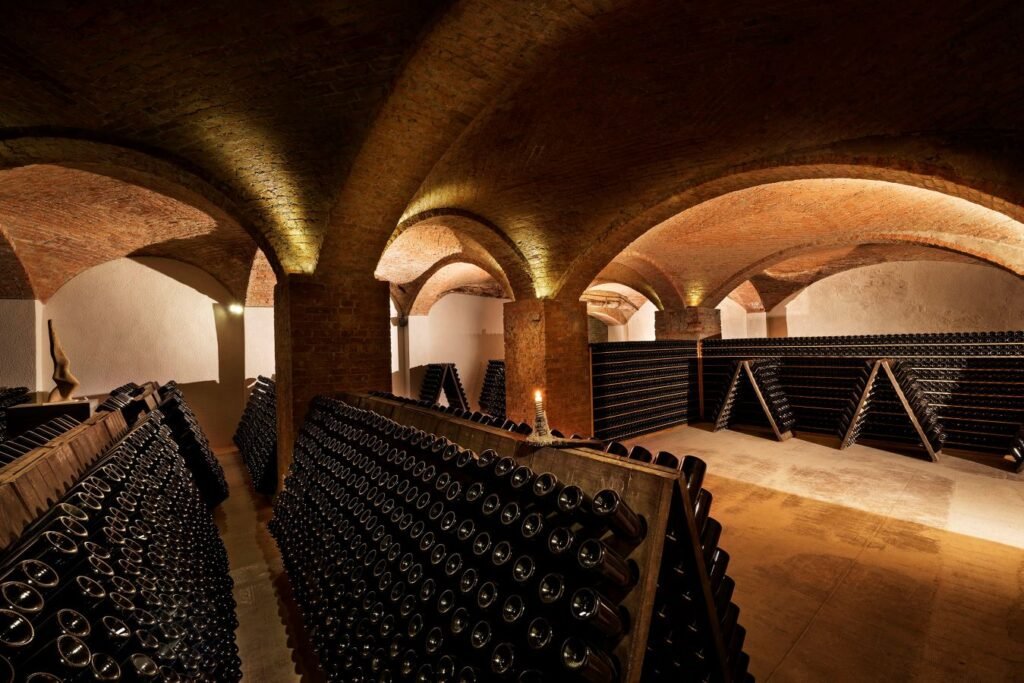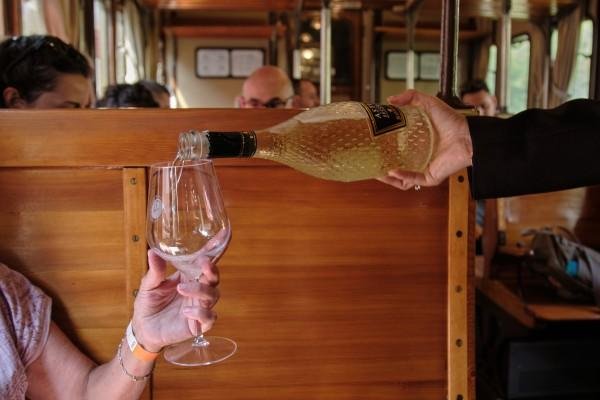
Увага! На сайті використовуються cookie файли.
The site uses cookie files
Даний сайт має вікове обмеження.
This site has age restrictions!
Я підтверджую, що мені, на жаль, давно виповнилося 18 років
Katerina Karamfyliduo, a Greek journalist, traveled through the Italian wine roads to the origins of the famous Asti wines. She shared her bright, vivid impressions with the readers of parallaximag.gr and drinks.ua.
Piedmont is a brilliant diamond nestled between Italy’s Liguria, Emilia-Romagna, the renowned Po Valley, and the mountainous regions of Switzerland and France. This region of Italy attracts and dominates the plans of every journalist writing about travel and wine. While there are numerous reasons to visit these charming lands, the wines of Asti are undeniably a major highlight. Piedmont has earned worldwide acclaim for its name, reflecting its unique location at the foot of the mountains. Its well-known climatic conditions are ideal: with cold nights, foggy mornings, and sunny days. These conditions are perfect for outstanding wines. Therefore, Piedmont is famous for its dry and sweet wines, both sparkling and still – ranging from light and fresh to powerful and aged.

At the foot of the Alps to the north and extending almost to the Ligurian Sea, gentle hills and slopes with a special microclimate create a green mosaic of vineyards on the fertile soil, popular among gourmands of this province.
This allows the vines to thrive in ideal conditions and gives the grapes the opportunity to express their aromatic qualities fully. The perfect geomorphology, limestone soils, and microclimate of the region are key factors in including local wines among the best in the world. Additionally, the modern technologically advanced wineries in the region make Piedmont a leader in viticulture compared to other Italian regions.
Piedmont is one of Italy’s most prominent wine regions and one of the most famous globally for its red wines – unique Nebbiolo and Barbaresco. It’s worth noting that Nebbiolo from the north and Sangiovese from Central Italy are two of the country’s most significant grape varieties.

This is, probably, one of the best places for wine lovers in Europe. But it’s not just about the wines. Visitors from around the world come to local estates, cellars, and wineries year-round and in any weather. I recall the incredible experience of visiting the underground Canelli cellars – true cathedrals with arcades and corridors dug into the hills. Due to their unique historical and architectural value, these underground cellars, where wines are stored today, have been recognized as a UNESCO World Heritage Site.

In addition to the estates and wineries themselves, the charming, quiet mountain villages, historical landmarks, and architectural masterpieces of bygone times provide the perfect backdrop for special meals featuring truffle dishes, unique cheeses, and cold appetizers, all accompanied by excellent local wines.
Of course, the highlight comes with main courses of rare Italian pasta varieties, excellent veal, homemade polenta, and impressive casseroles to suit any taste!
Trattorias, restaurants with amazing, updated wine lists, and wineries perfectly suited for tastings, even without considering the natural landscape, are a delight for a fantastic wine tour.
Alongside the region’s star wines mentioned above, Piedmont has another gem – naturally sweet, summer-fragranced, sparkling white wine of the Moscato variety, produced mostly in the Asti region – unique Moscato D’Asti!
Let’s look at its historical roots: the Moscato variety has been cultivated for 1000 years in Piedmont, primarily in the Asti, Cuneo, and Alessandria regions. Giovanni Battista Croce, a Milanese jeweler in the 17th century, is considered the father of Moscato d’Asti, as he managed to produce a lightly alcoholic wine while preserving the natural sweetness of the must and its aromatic qualities. Four centuries have passed since then – until 1993, when Asti Spumante and Moscato d’Asti were awarded DOCG status.

Today, the hallmark of Asti includes fruity notes with floral dominance, delicate playful bubbles, and perfectly low alcohol content, guiding the world of gastronomic pleasures.
The Moscato Bianco grape offers two distinct expressions in Asti Spumante (by the way, the world’s most famous sweet sparkling wine) and Moscato D’Asti. In these two wines based on Moscato, the aroma and all the organoleptic qualities of the grape remain unchanged and are conveyed directly to the glass thanks to gentle pressing of the grapes and incomplete alcoholic fermentation, which allows some natural sugars to remain in the wine.
Both wines come from the vineyards of the Asti, Cuneo, and Alessandria regions. The Alps and Apennines create an excellent microclimate for producing one of Europe’s top winemaking products! Some believe that the relative proximity of Alessandria to coastal culture also influences the young, fresh style of the wines.
Asti Spumante DOCG is made from 100% Moscato Bianco; it is a sparkling wine with an aromatic flavor, well-balanced sweetness, and moderate alcohol content (6-12%). It is a very pleasant aperitif, typically paired with first courses, cold cuts, fresh cheese, shellfish, as well as fruits and delicate sweets. The area produces 60 million bottles per year.
Moscato D’Asti DOCG is an especially refined wine, with ripe grape aromas and slightly sweeter, lighter, and more delicate play with floral notes and hints of sage and ripe fruits. Its current appeal lies in its low alcohol content (4.5-6.5%). Moscato D’Asti DOCG is ideal for accompanying light desserts or as an aperitif or digestif at the end of a meal. The production volume is 40 million bottles per year.
Foto: Alʹvaro Fernandes Priyeto, parallaximag.gr
⇒ Join our social networks ⇒ Optimistic D+ editors will take this as a compliment.
⇒ Every like is taken as a toast!
09.09.2024
08.06.2022
07.06.2022